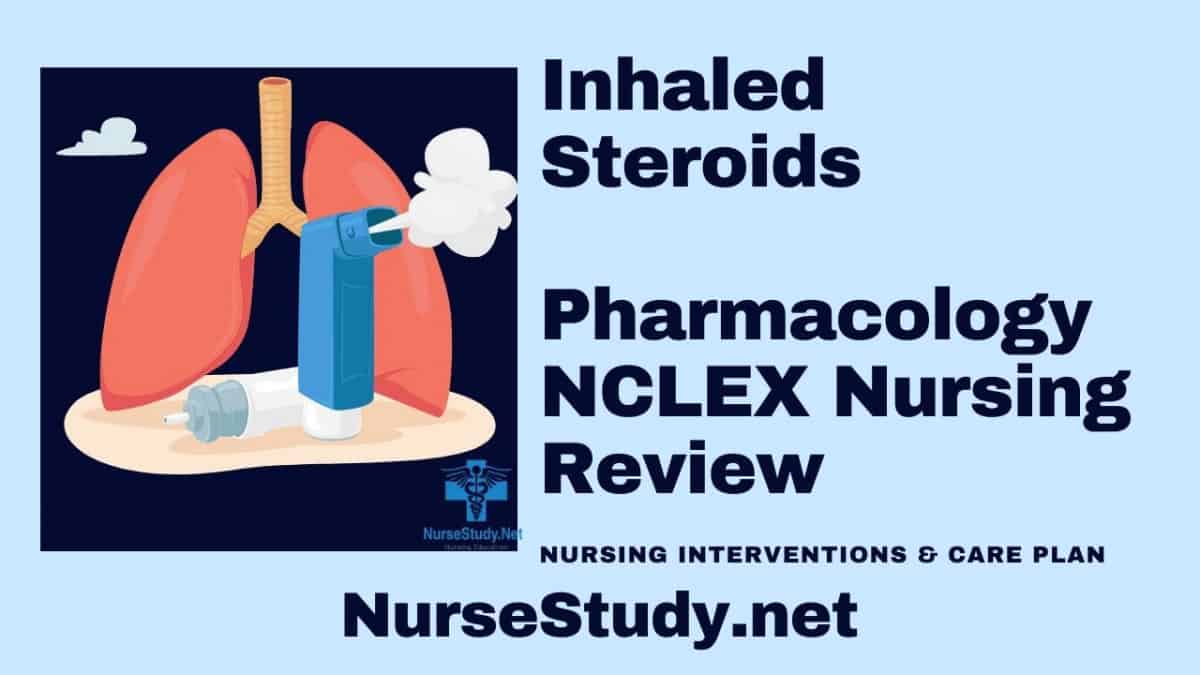Inhaled steroids, also known as inhaled corticosteroids (ICS), are a class of medications commonly used to manage chronic respiratory conditions such as asthma and chronic obstructive pulmonary disease (COPD). These medications work by reducing inflammation in the airways, improving breathing and preventing exacerbations.
Generic names: Beclomethasone, Budesonide, Ciclesonide, Flunisolide, Fluticasone, Mometasone
Brand names: Qvar, Pulmicort, Alvesco, Aerospan, Flovent, Asmanex
Pharmacologic class: Corticosteroids
Therapeutic class: Anti-inflammatory, Bronchodilator
Mechanism of action: Inhaled steroids work by reducing inflammation in the airways. They suppress the production of inflammatory mediators and decrease the number of inflammatory cells in the airways, leading to improved respiratory function and symptom control.
Indications for use: Management of chronic respiratory conditions such as asthma and COPD. They are used as maintenance therapy to prevent symptoms and reduce the frequency and severity of exacerbations.
Precautions and contraindications: Hypersensitivity to any components of the inhaler. Use with caution in patients with active or quiescent tuberculosis or untreated fungal, bacterial, or viral infections. Patients with osteoporosis or at high risk for osteoporosis should be monitored closely.
Drug Interactions
- Strong CYP3A4 inhibitors (ketoconazole, ritonavir) may increase systemic corticosteroid effects.
- Concurrent use with other corticosteroids may increase the risk of adverse effects.
- Beta-blockers may reduce the effectiveness of inhaled steroids
Adverse Effects
- Oral thrush (candidiasis)
- Hoarseness or dysphonia
- Cough or throat irritation
- Increased risk of pneumonia (in COPD patients)
- Potential for adrenal suppression with high doses
- Potential for growth suppression in children
- Bruising or thinning of the skin
- Cataracts or glaucoma (with long-term use)
Administration Considerations
Available preparations: Metered-dose inhalers (MDIs), dry powder inhalers (DPIs), and nebulizer solutions
Dosages: Vary depending on the specific medication, patient age, and severity of the condition. Always follow the prescribed dosage.
Onset, Peak, and Duration: The effects of inhaled steroids are generally not immediate. It may take several days to weeks to see the full benefit.
Nursing Considerations for Inhaled Steroids
Related Nursing Diagnoses
- Ineffective breathing pattern
- Risk for infection
- Anxiety related to medication administration
- Deficient knowledge related to medication use and side effects
Nursing Assessment
- Assess the patient’s respiratory status, including breath sounds, respiratory rate, and oxygen saturation.
- Evaluate the patient’s inhaler technique to ensure proper medication delivery.
- Assess for signs of oral thrush or other side effects.
- Monitor growth in pediatric patients on long-term therapy.
- Assess the patient’s understanding of the medication regimen and proper inhaler use.
Nursing Interventions
- Teach and reinforce proper inhaler techniques to ensure optimal medication delivery.
- Instruct patients to rinse their mouth and gargle after each use to reduce the risk of oral thrush.
- For patients using inhaled steroids and bronchodilators, teach them to use the bronchodilator first, wait 5-10 minutes, then use the inhaled steroid.
- Monitor patients for signs of systemic effects, especially on high doses or long-term therapy.
- Provide spacer devices for patients using metered-dose inhalers, if appropriate.
Patient Teaching Associated with Inhaled Steroids
- Explain that inhaled steroids are controller medications and should be taken regularly as prescribed, even when symptoms are not present.
- Demonstrate and have the patient practice proper inhaler technique. Reassess technique at follow-up visits.
- Instruct patients to rinse their mouth with water and spit it out after each use to reduce the risk of oral thrush.
- Educate patients about the importance of not stopping the medication abruptly and to consult their healthcare provider before making any changes to their regimen.
- Teach patients to recognize signs of exacerbation or infection that require medical attention.
- Provide instructions on proper use and cleaning for patients using a spacer device.
- Advise patients to carry a steroid card or medical alert bracelet if on long-term, high-dose therapy.
- Inform patients that it may take several days to weeks to see the medication’s full benefit.
This is not an all-inclusive list of possible drug interactions, adverse effects, precautions, nursing considerations, or patient instructions. Please consult further with a pharmacist for complete information.
References and Sources
- Global Initiative for Asthma. (2021). Global Strategy for Asthma Management and Prevention. Retrieved from https://ginasthma.org/wp-content/uploads/2021/05/GINA-Main-Report-2021-V2-WMS.pdf
- Hossny, E., Rosario, N., Lee, B. W., Singh, M., El-Ghoneimy, D., Soh, J. Y., & Le Souef, P. (2016). The use of inhaled corticosteroids in pediatric asthma: update. World Allergy Organization Journal, 9(1), 26. https://doi.org/10.1186/s40413-016-0117-0
- Lipworth, B., Kuo, C. R., & Chan, R. (2020). Systemic adverse effects of inhaled corticosteroid therapy: A systematic review and meta-analysis. Archives of Internal Medicine, 180(11), 1452-1460. https://doi.org/10.1001/archinternmed.2020.3542
- Price, D., Brusselle, G., Roche, N., Freeman, D., & Chisholm, A. (2015). Real-world research and its importance in respiratory medicine. Breathe, 11(1), 26-38.
